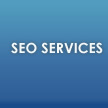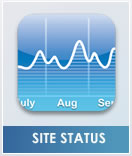|
Organisations apply huge resources the world over
developing a web presence in order that Internet users visit their
web sites and complete desired actions. These desired actions may
include purchasing products, ordering a service, retrieving
information, casting a vote, completing a registration form,
downloading a file or even simply contributing to a forum
discussion. Regardless of the action, its completion can be regarded
as the ultimate judge of SEO/SEM (search engine marketing) success.
In addition, the organisation then has to ask itself whether a
successful Search Engine Optimisation campaign contributes to
business growth.
Action completion, through successful SEO/SEM implementation and
subsequent business growth respectively involve and rely on
effective web usability. Easier said than done it would seem, as
studies show that:
· In excess of 40% of online purchase attempts fail
· 50% of new visitors do not go beyond a site's home page
· Less than 10% of visitors revisit a site.
Web usability is all about developing websites in such a way that
users can find what they're looking for quickly and efficiently. Web
usability focuses on making it as easy as possible for visitors to
navigate sites and to retrieve, input and process information. Sites
should look appealing, pages load quickly and visitors not suffer
unnecessary restrictions or obstructions.
Professionally applied web usability can reap huge rewards for
businesses. IBM estimates that for every £1 spent on web usability,
organisations enjoy a return of between £10 and £100. This analysis
concurs with what seems to be an industry consensus that site
redesigns with web usability as their primary objective can lead to
substantial gains.
How can web usability redesign lead to such dramatically improved
performance?
Web usability has a dual effect. First, it affects the navigation of
a user through the website. It determines such things as the landing
page, the immediate links a user is likely to follow, the call to
action and the conversion page. It also involves tracking the time
spent by users on particular pages and the time taken by the user to
navigate to the desired information or functionality.
Typical business metrics used to measure usability include:
* Conversion rates, such as sales or lead generation
* Traffic numbers, such as page view statistics
* User performance, such as the time needed to perform key tasks
* Target feature usage, such as the number of users who click a link
to crucial information
The critical question is - do your visitors do what you ultimately
want them to do? If so, then how often? Is this more or less than
before?
Driving traffic to the website is half the battle, having a website
that actively encourages users to take a desired action might be
considered to be even more important. Using conversion rate analysis
informs Search Engine Optimisation decision-making and is absolutely
essential in helping organisations take the right actions. It would
appear that generally web usability is improving slightly as at the
height of the first dot-com bubble the regular conversion rate was
1%. Today, 2% is a common conversion rate.
Informed decision making through general site analytics and
conversion rate analysis can lead to the adjustment or inclusion of
a variety of usability techniques. At SEO-MAMA we take into
consideration numerous web usability factors including:
· Architecture = 80% of usability. - If users can't find what
they want in 3 clicks, you've lost them. It's critical to build an
effective navigational structure. In addition to this users have
gradually become accustomed to particular layouts and phrases on the
Internet. There are numerous conventions such as using the term
'About Us' for organisation information, the terms 'Shopping cart'
and 'Check Out', the organisations logo top left with a link back to
the home page. As the Internet matures users are become increasingly
used to things being a certain way. Breaking conventions can damage
web usability.
· User task flow - match page flow with user workflow.
· KISS - Make controls obvious and understandable. Avoid
confusion between emblems, banners, and buttons.
· Reuse - Apply ergonomically designed templates or CSS.
· Test with fast and dirty prototyping throughout development
-Appreciate technological limitations and compatibility. Identify
and optimize for target browsers and user hardware.
· Understand user tolerances - Users are impatient. Usability
studies have shown that 8.6 seconds is the maximum time web users
will wait for a page to download Design for a 2-8 second maximum
download. Reuse header graphics so they can load from cache. Avoid
excessive scrolling.
· Multimedia - handle with care. Badly applied multimedia can
slow load times, distract and confuse.
· Analytics - Monitor site traffic and performance. Click
path Analytics that tell you how people are navigating through the
site and can inform you of the effectiveness of your site layout.
They offer opportunities to engage visitors more effectively by
improving the navigation experience. Top landing pages, bounce
rates, conversion rates, trend analysis, geographical referrals,
referring domains and keyword analysis should all be part of the
performance analysis
It's also worth bearing in mind that customer loyalty is playing an
increasing role is bottom lines.
Leading industry analysts believe that we'll soon reach the point
where increasing the loyalty rate will be the best way to achieve
substantial improvements in website business metrics. Whereas the
period 2000-2010 might be aptly referred to as the conversion decade
for website usability professionals, 2010-2020 will be the loyalty
decade. What better way to cultivate a loyal customer base than to
give them a highly user-friendly experience from the off?
Web usability also affects the ability of the search engine spiders
to Effectively Crawl Websites. From a Search Engine Optimisation
perspective it is vital that websites are both user friendly as well
as optimally accessible to search engines. Search engines emulate
user navigation. In order for search engines to spider and correctly
index a website, it is essential for the website to adhere to web
usability standards.
If spiders can't reach your pages, then the search engine can't
include them in their search listings. Remember spiders don't read
like humans do. What they're particularly interested in especially
if they are easily accessible are - Title tags, Meta tags, Header
Tags, keywords and Links.
At SEO-MAMA we are expert in applying our experience in developing
spider and human friendly websites. Contact us now to find out how
our web usability redesigns can dramatically increase your
conversion rates. In order for search engines to spider and
correctly index a website, it is absolutely essential for the
website to adhere to Web Accessibility standards.
Website layout also affects usability. Website elements should be
placed intuitively where a user is most likely to see and use them.
Usability is concerned with ensuring that all parts of a website are
easily accessible through the user interface. It involves user
interface design, web systems design, site mapping, and website
structure design.
In some contexts, usability is deemed to refer to as the ability of
e-commerce sites to funnel a lead into a conversion. SEO-MAMA offers
complete website services to create e-commerce friendly web
usability solutions. Research has shown that improvements to
usability can drastically increase conversions, by as much as 100%.
People have become used to looking for functionality in specific
places on the web page. When these norms are adhered to, it makes it
easier for people to find what they need and thus convert to sales.
|



















